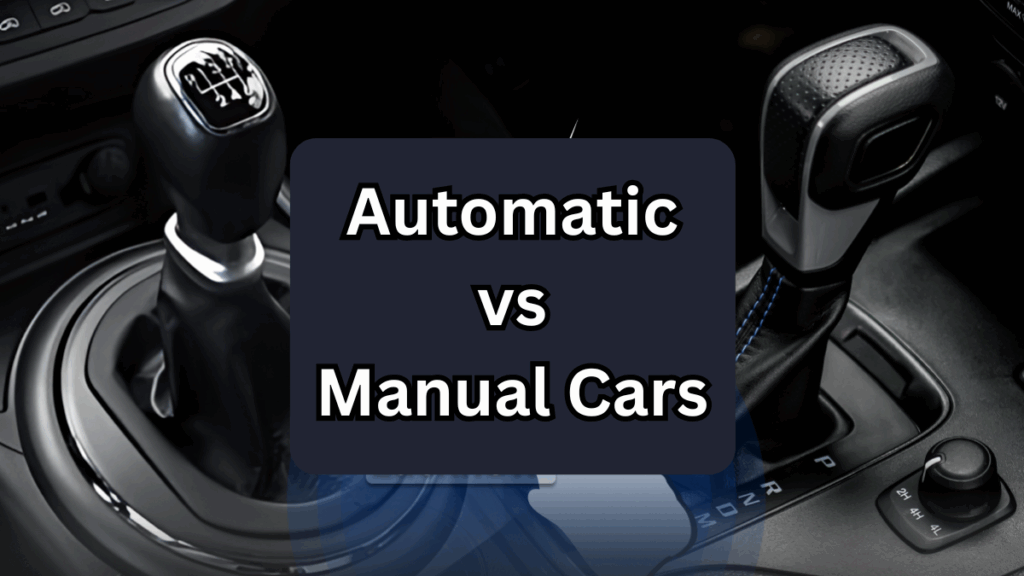As the Indian automotive industry steers into 2025, one major question continues to divide car buyers—automatic vs manual? From metro city dwellers to tier-2 town residents, understanding India’s transmission preference has become crucial for car manufacturers and dealerships alike.
With evolving car buying patterns, increasing traffic congestion, and technological advancements, the automatic vs manual car trend in India in 2025 is witnessing a significant shift. Let’s dive into what Indian buyers are leaning toward this year.

Table of Contents
Manual vs Automatic: What Indians Prefer in 2025
Indian roads are changing, and so are Indian preferences. Here’s a quick snapshot of what’s shaping consumer choice:
Key Buying Trends
-
Urban areas prefer automatic for ease in traffic.
-
Rural and budget-conscious buyers stick with manual for better mileage and lower cost.
-
Young buyers (Gen Z & Millennials) are pushing the shift toward automatic.
-
EVs and hybrid cars—most of which are automatic—are influencing the trend.
Transmission Preferences: A Comparative Table
Feature |
Manual Cars |
Automatic Cars |
|---|---|---|
Ease of Driving |
Requires frequent gear shifting |
Smooth, no clutch, easier in traffic |
Fuel Efficiency |
Traditionally higher |
Improved in newer models |
Cost (Initial & Maintenance) |
Lower purchase price |
Higher upfront cost |
Target Demographic |
Budget-conscious, rural buyers |
Urban commuters, tech-savvy users |
Market Share (2025 estimate) |
~45% |
~55% and growing |
The automatic vs manual car trend India 2025 clearly shows a rise in automatic adoption, especially in metro cities and among EV buyers.
Why Is Automatic Gaining Ground in India?
Several factors are contributing to this shift in transmission preference in India:
-
Traffic Congestion: With bumper-to-bumper traffic in cities like Delhi, Mumbai, and Bangalore, automatics offer unmatched convenience.
-
Availability Across Segments: From hatchbacks to SUVs, automatics are now available at almost every price point.
-
Rise of EVs and Hybrids: Most electric cars come with automatic transmissions by default.
-
Changing Lifestyles: As more women and first-time drivers buy cars, ease of use becomes a priority.
Urban vs Rural: How Geography Affects Car Buying Patterns
Understanding car buying patterns across geographies helps decode the trend better.
Urban Buyers
-
Prefer automatics for daily commutes
-
Willing to pay a premium for convenience
-
Often opt for compact SUVs and EVs
Rural Buyers
-
Still prefer manual due to:
-
Better mileage on rural roads
-
Easier to repair and maintain
-
Cost-sensitive purchasing behavior
-
The Road Ahead – What’s Next for 2025?
With the automatic vs manual car trend India 2025 tilting in favor of automatic vehicles, the market is expected to continue this momentum through:
-
Wider availability of affordable automatics (AMT, CVT, DCT)
-
Government support for EVs and hybrids
-
Smart features and connected car technologies enhancing the automatic experience
FAQs
1. Which transmission type is more popular in India in 2025?
Automatic transmissions are now more popular, especially in urban areas and among new-age buyers, with nearly 55% of new car buyers opting for automatics.
2. Are automatic cars more expensive to maintain in India?
Generally, yes—but with newer technologies like AMT and better servicing infrastructure, the gap is narrowing rapidly.
3. Do rural car buyers still prefer manual cars?
Yes, many rural buyers prefer manual cars for their affordability, fuel economy, and ease of maintenance.
4. What’s driving the shift toward automatic in India?
Urban congestion, increased availability, and the rise of EVs and hybrid cars—all of which typically come with automatic transmissions—are key drivers of this shift.
Final Thoughts
The automatic vs manual car trend India 2025 highlights how evolving consumer behavior, convenience, and innovation are reshaping the auto industry. While manual cars still have their place—especially in rural settings—automatic vehicles are clearly steering ahead.
Click here to learn more
